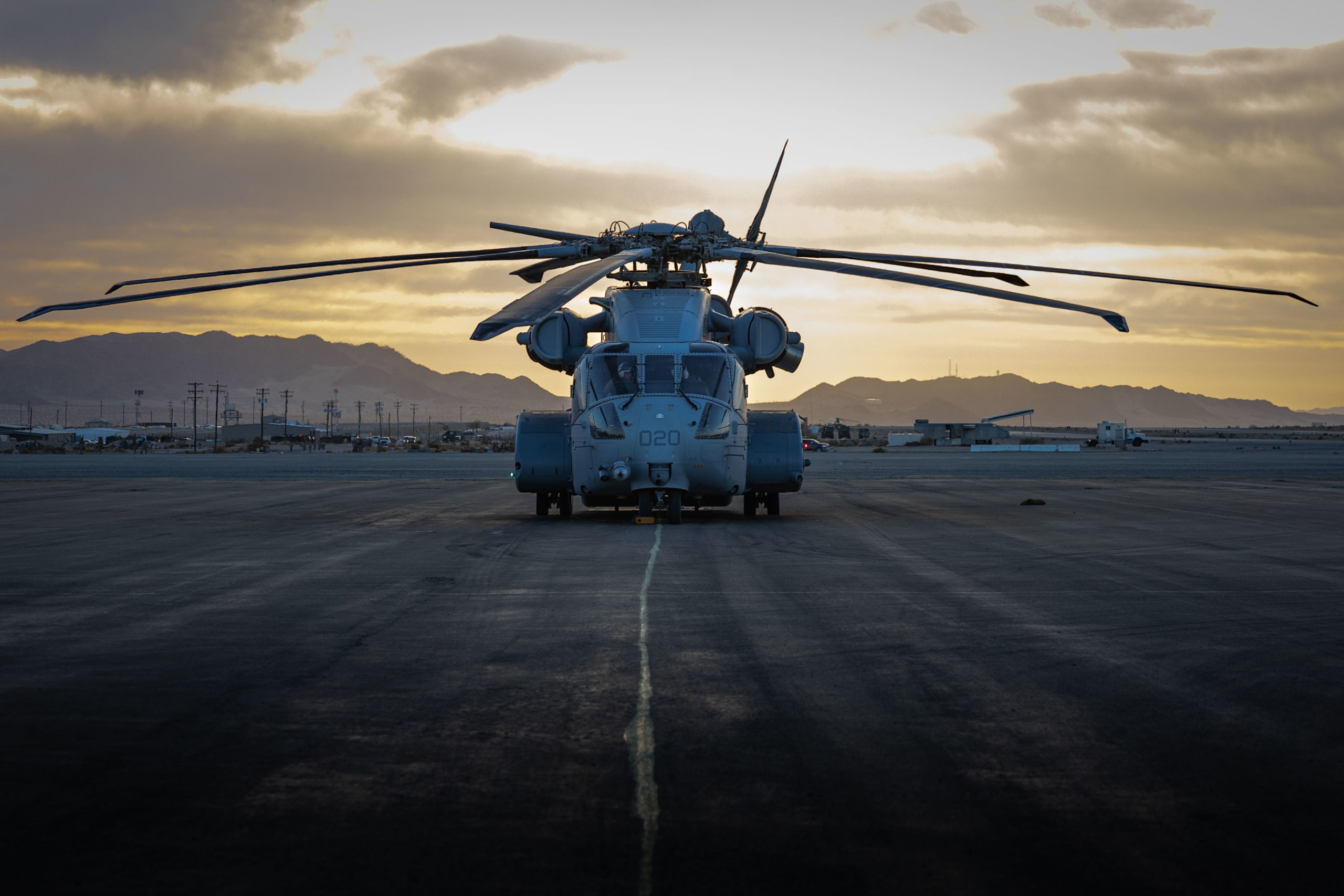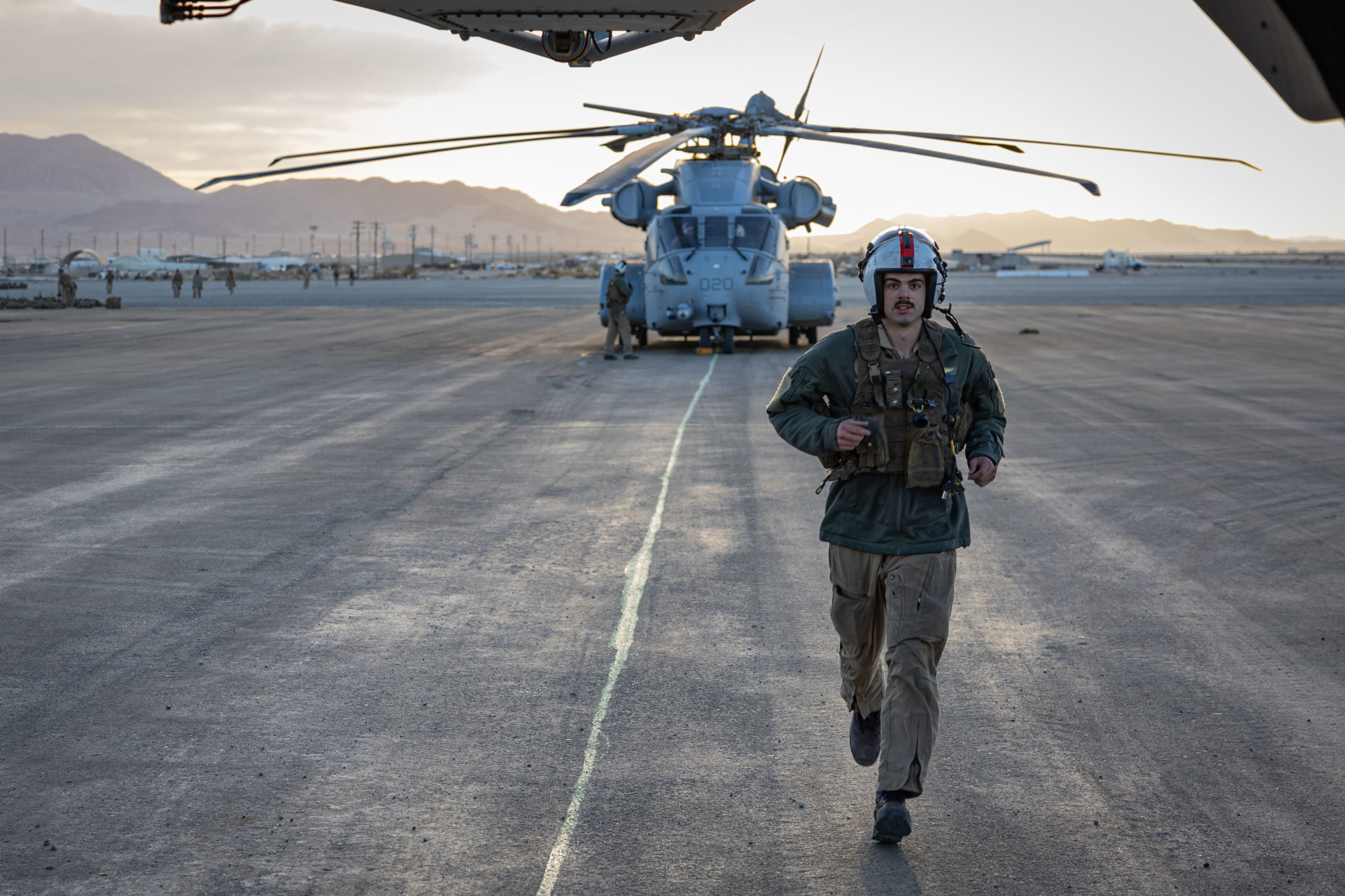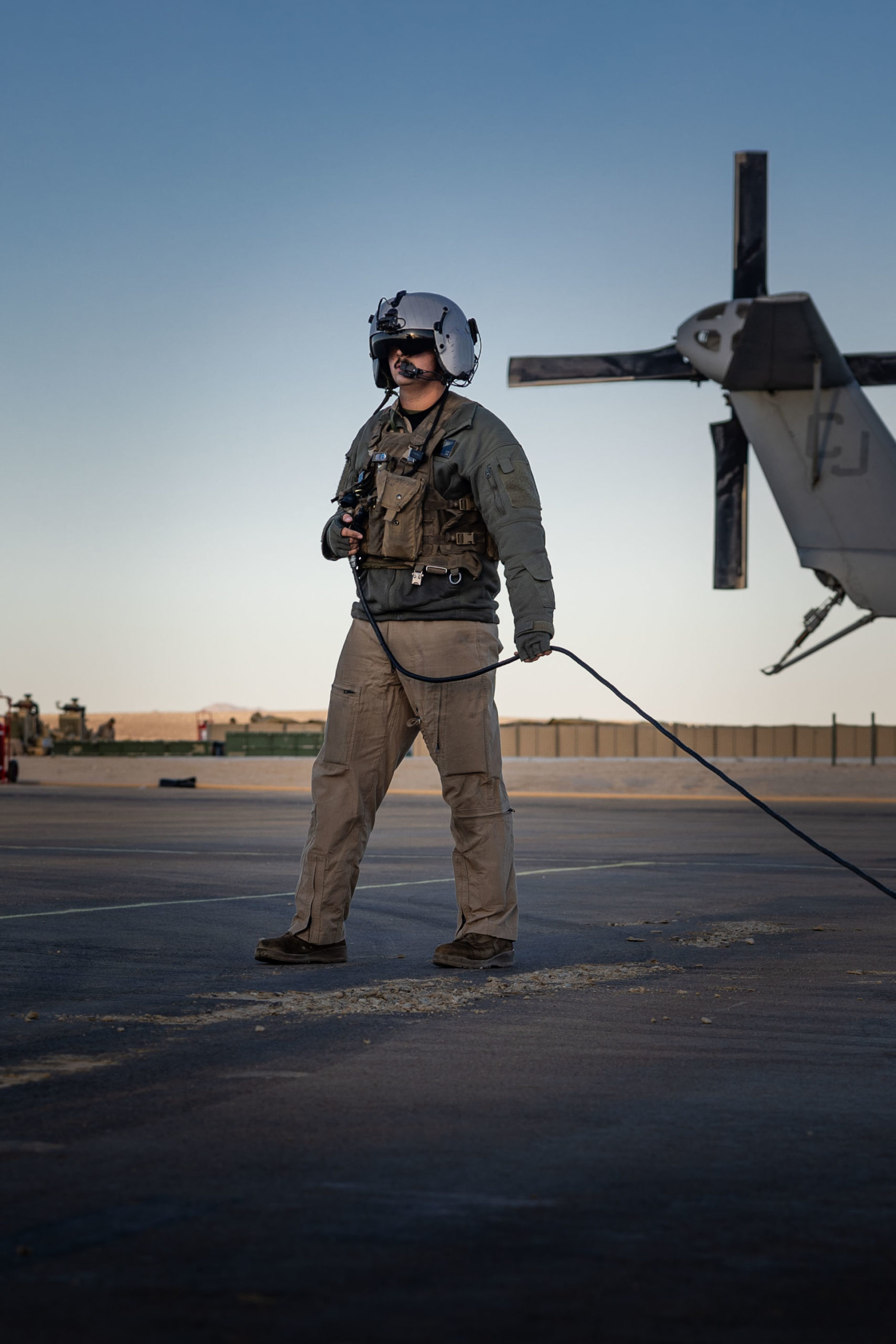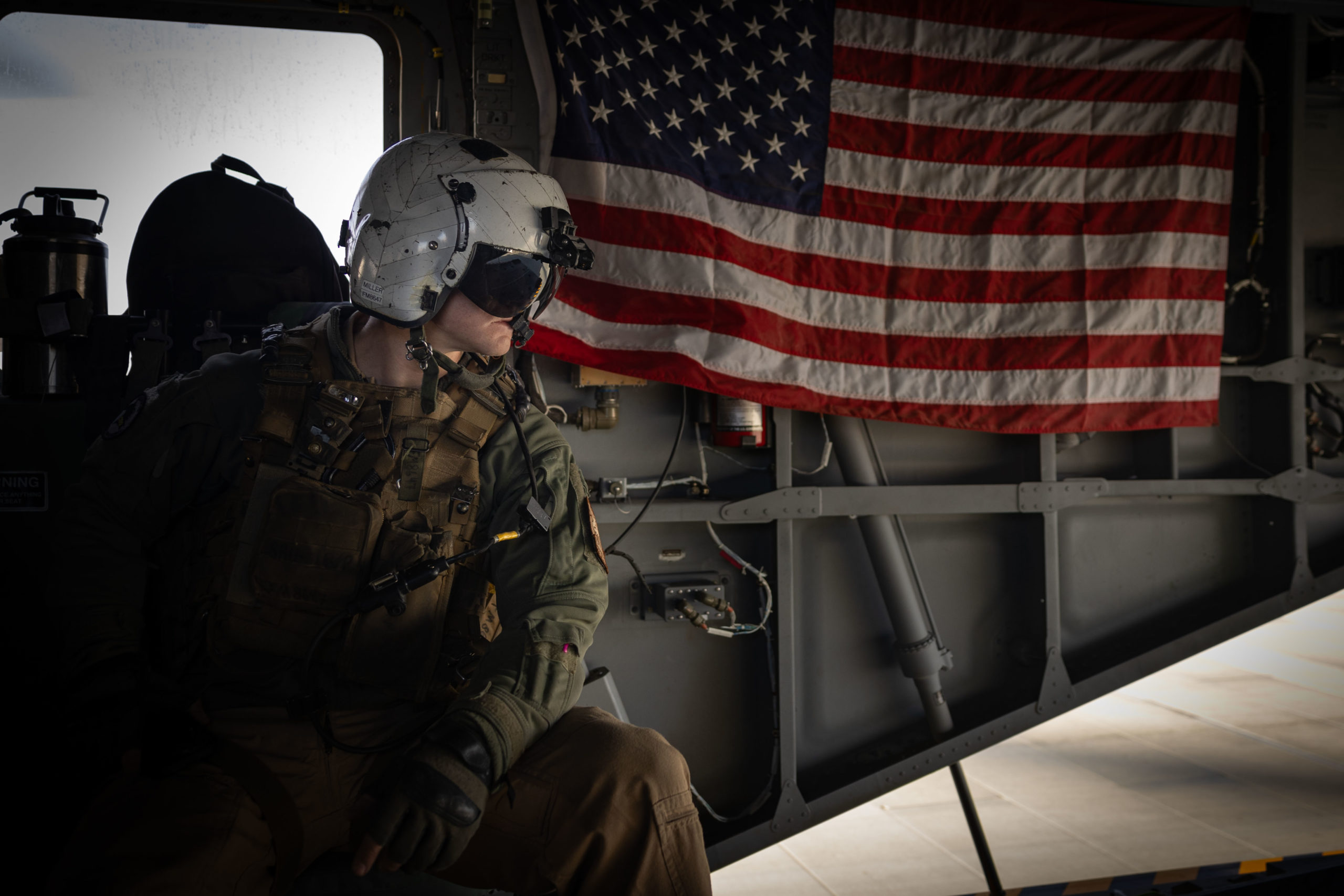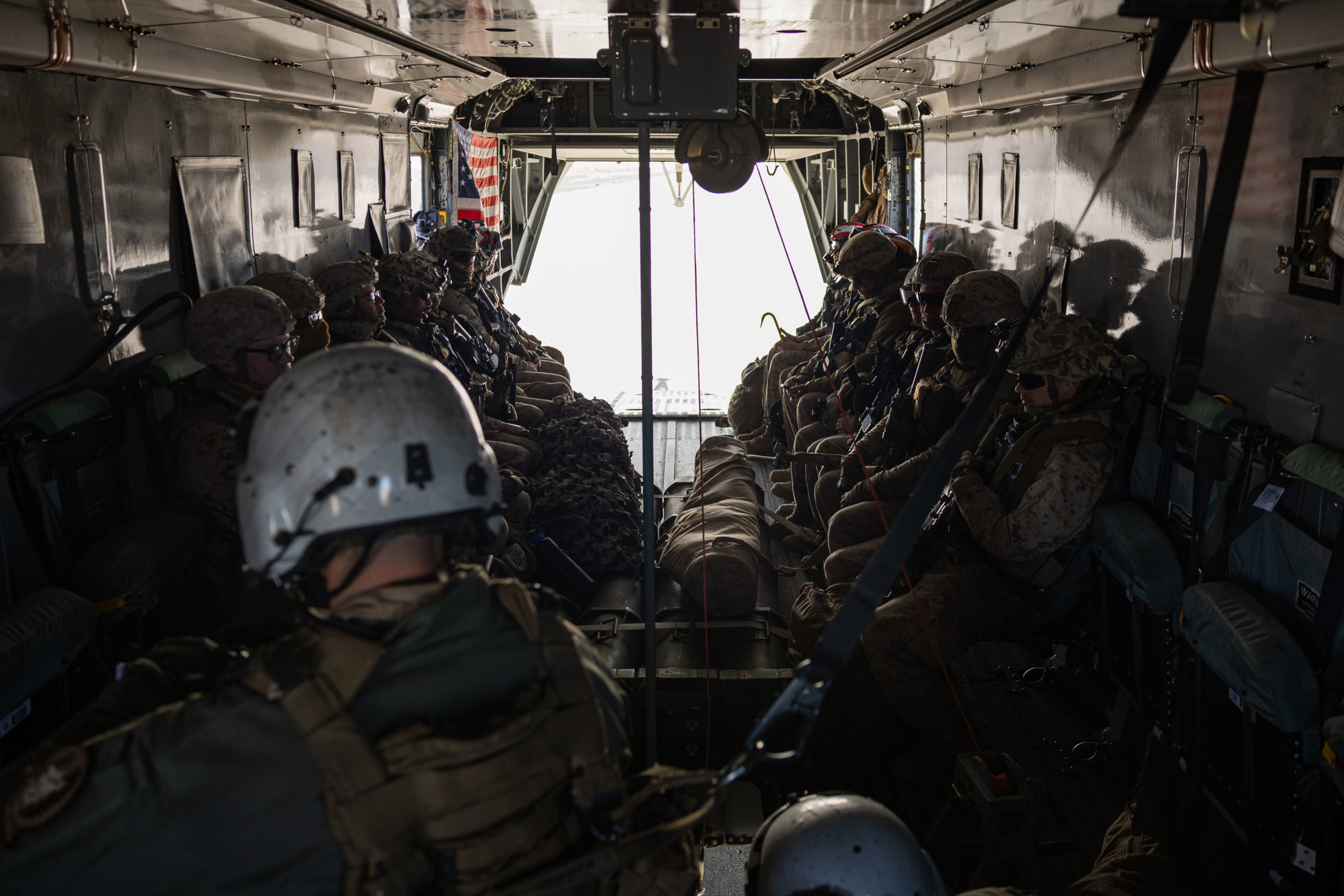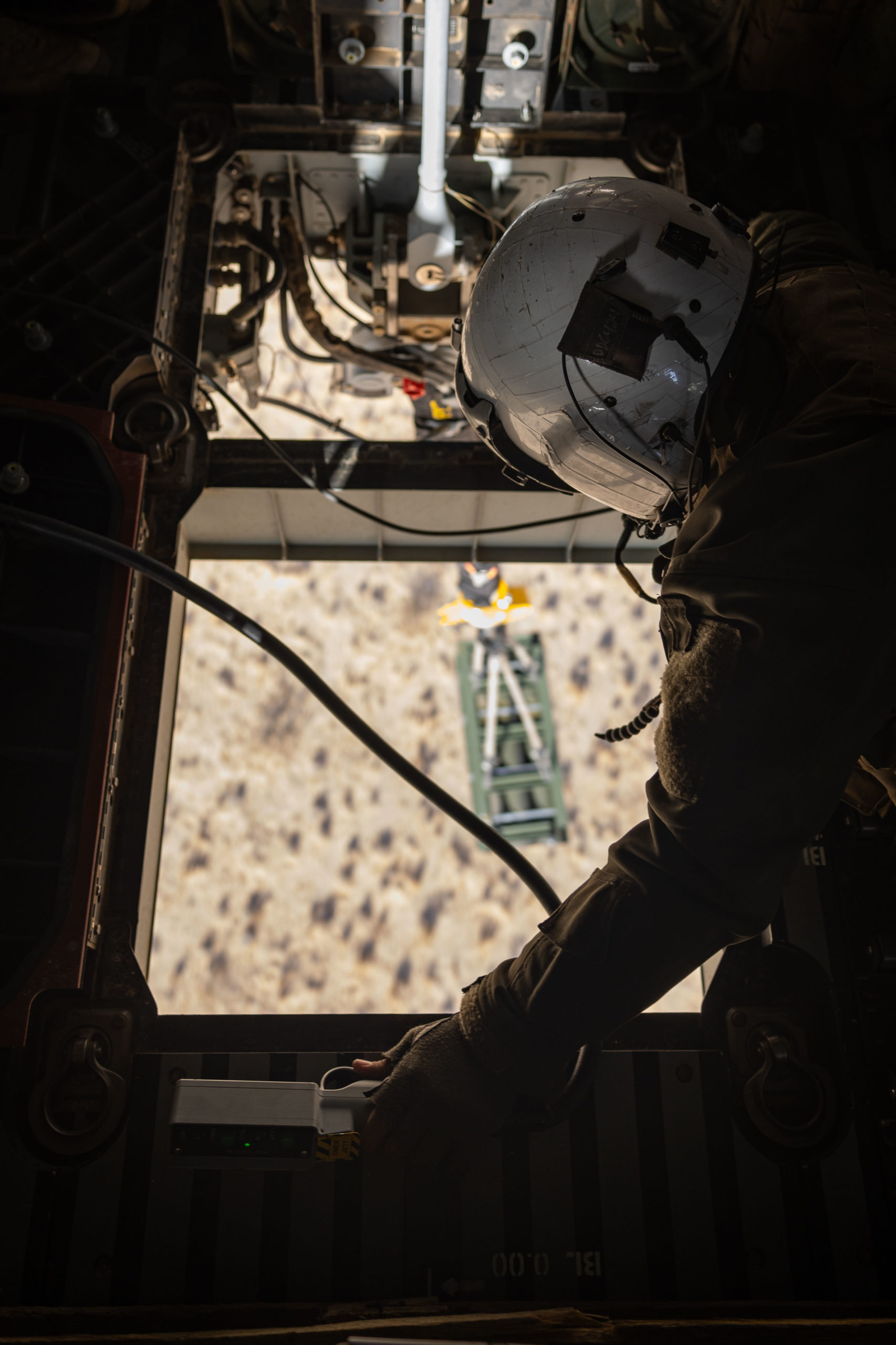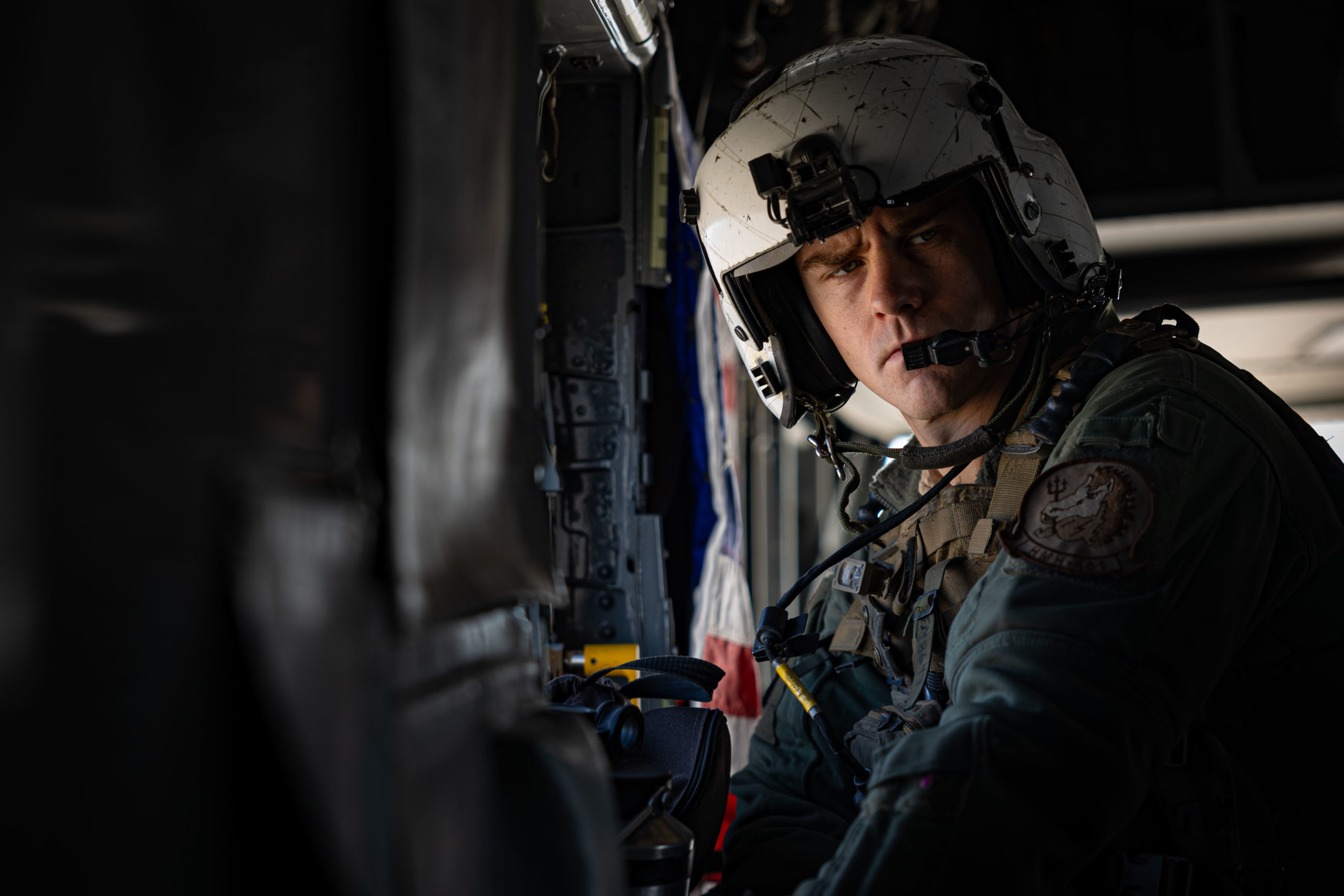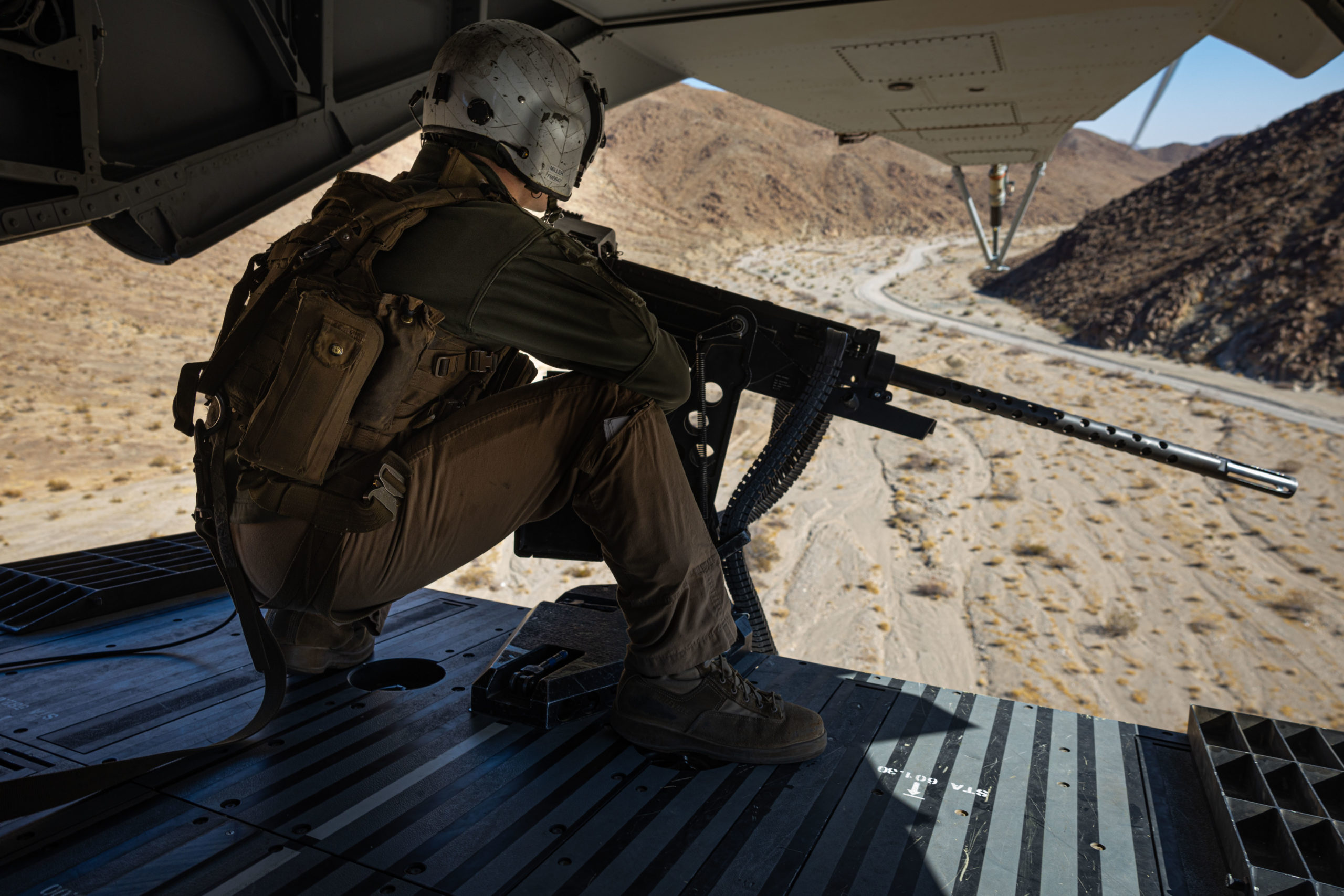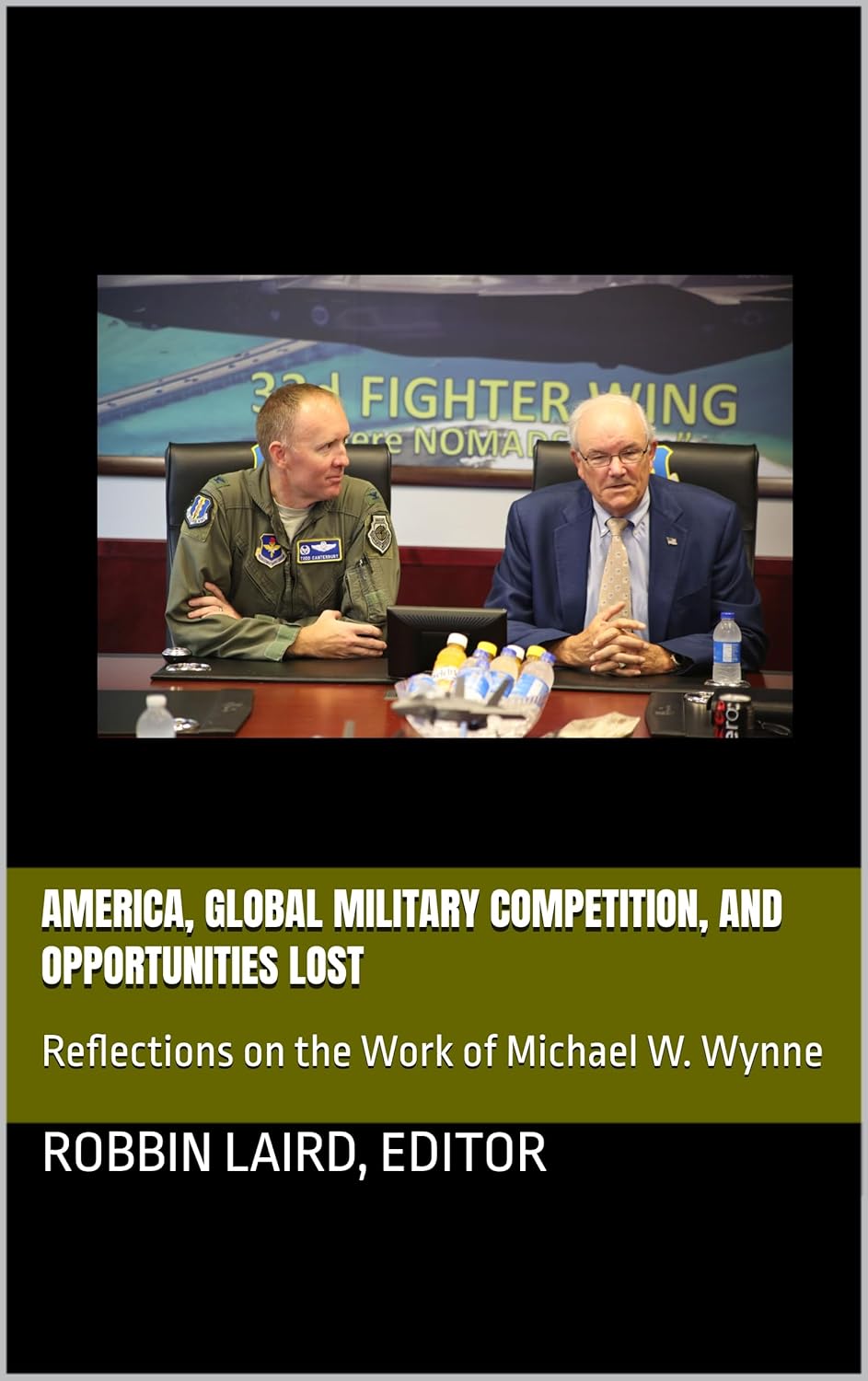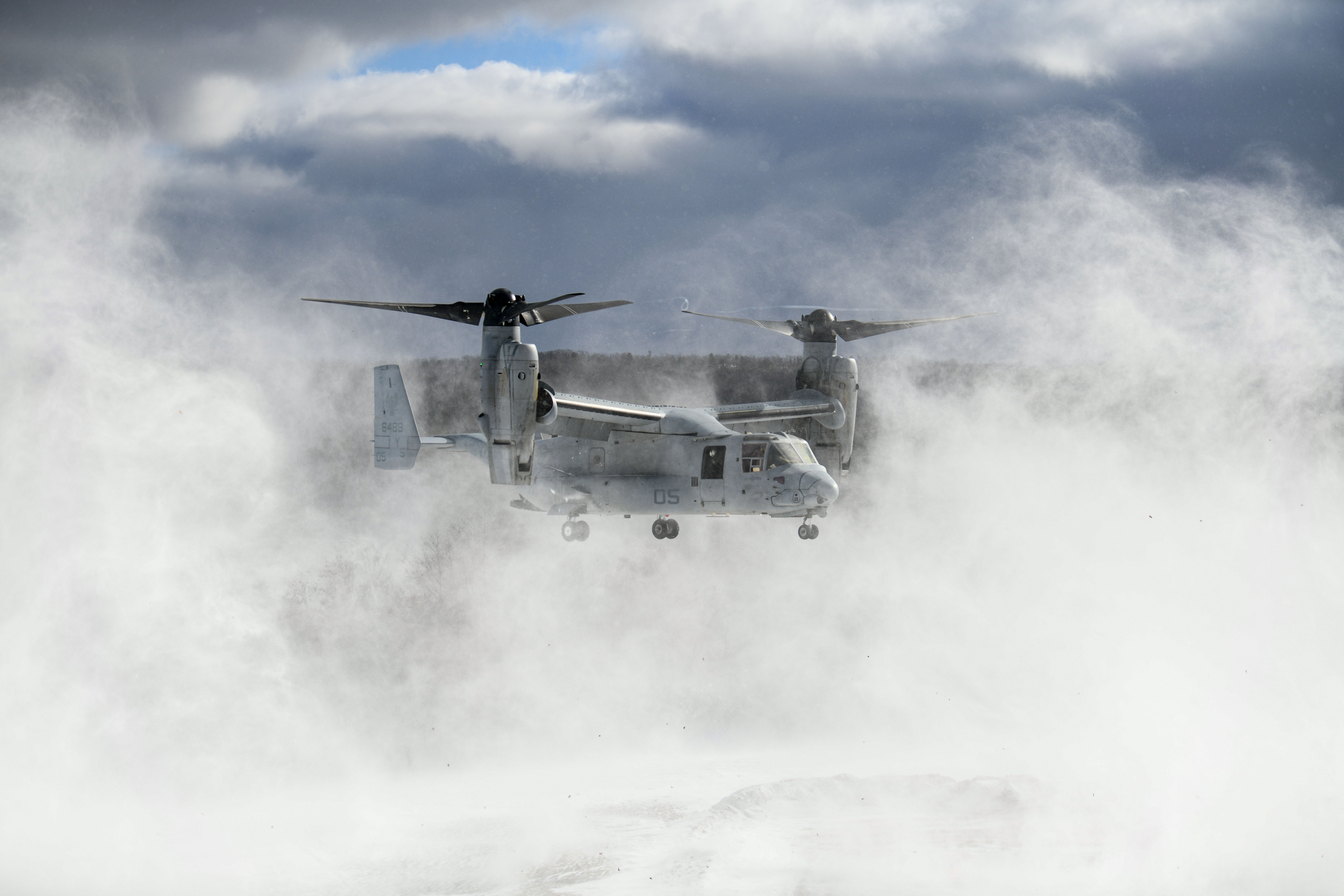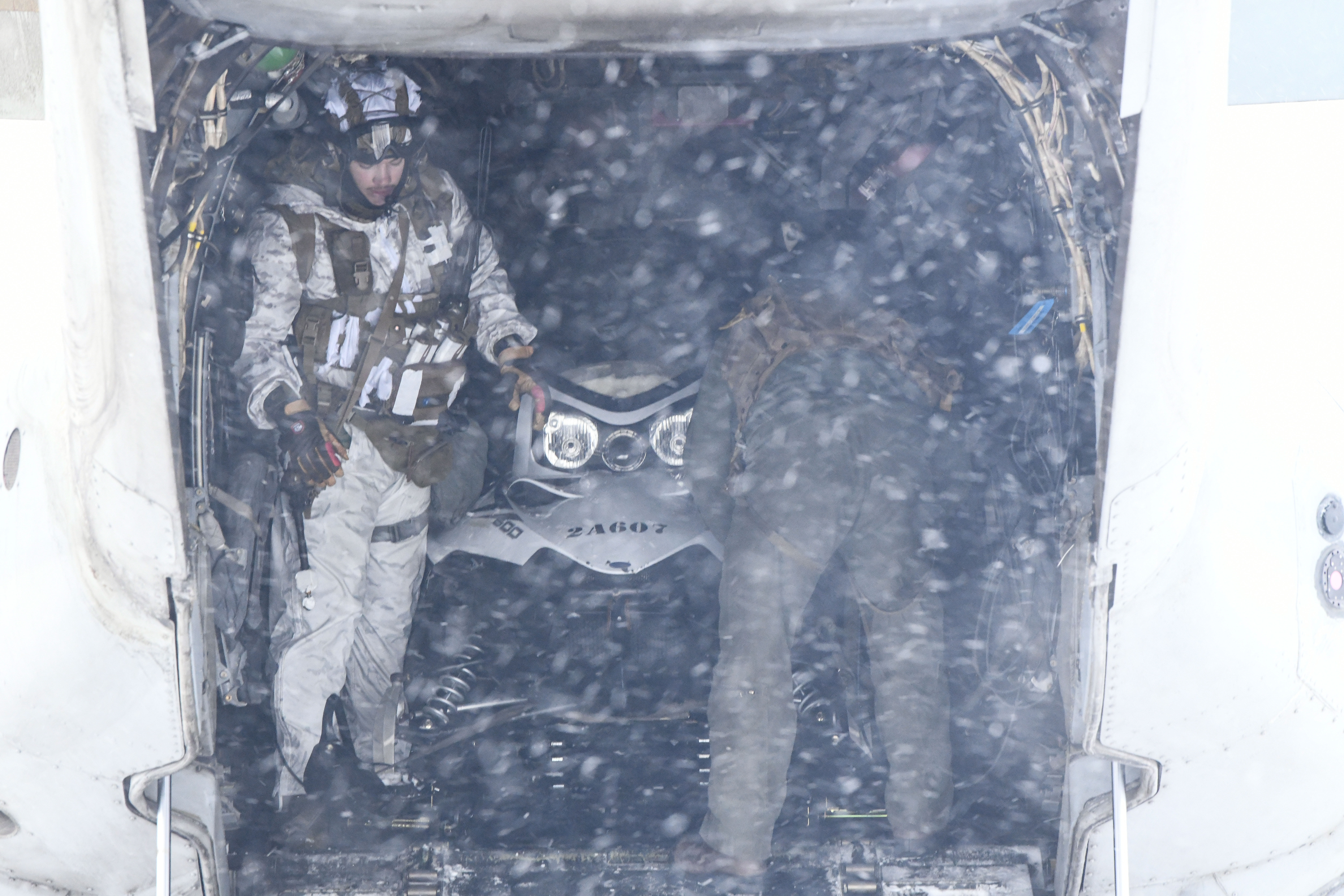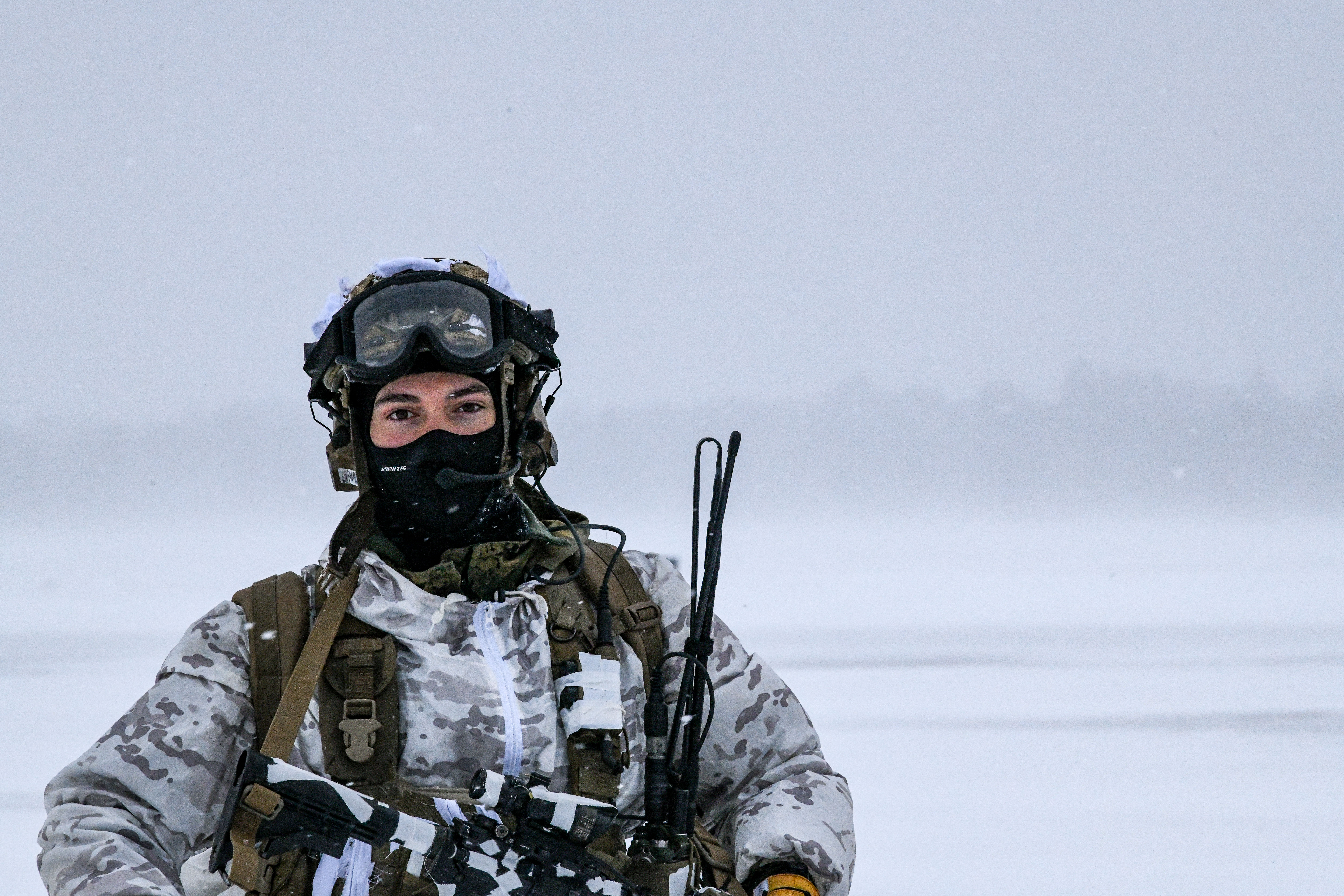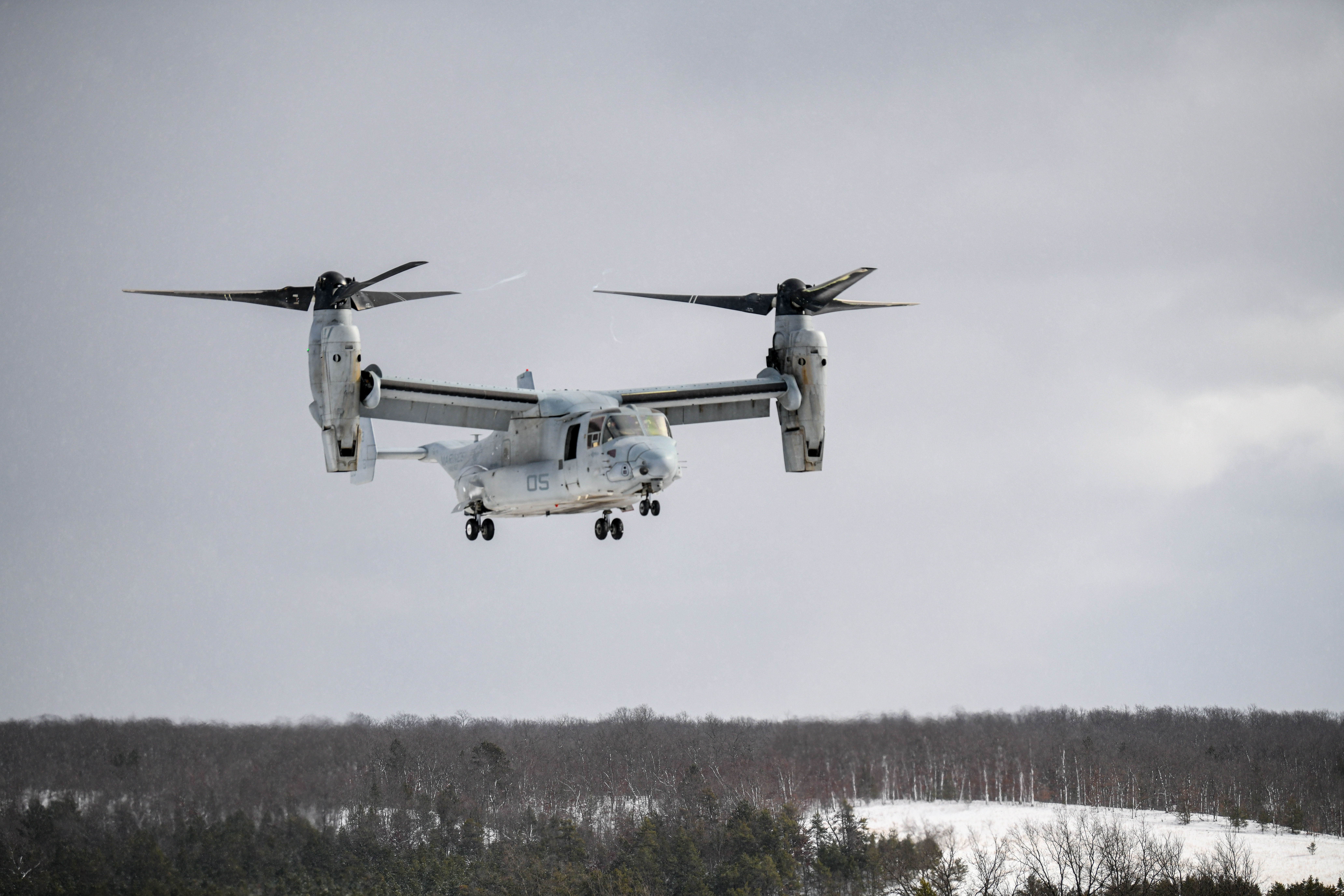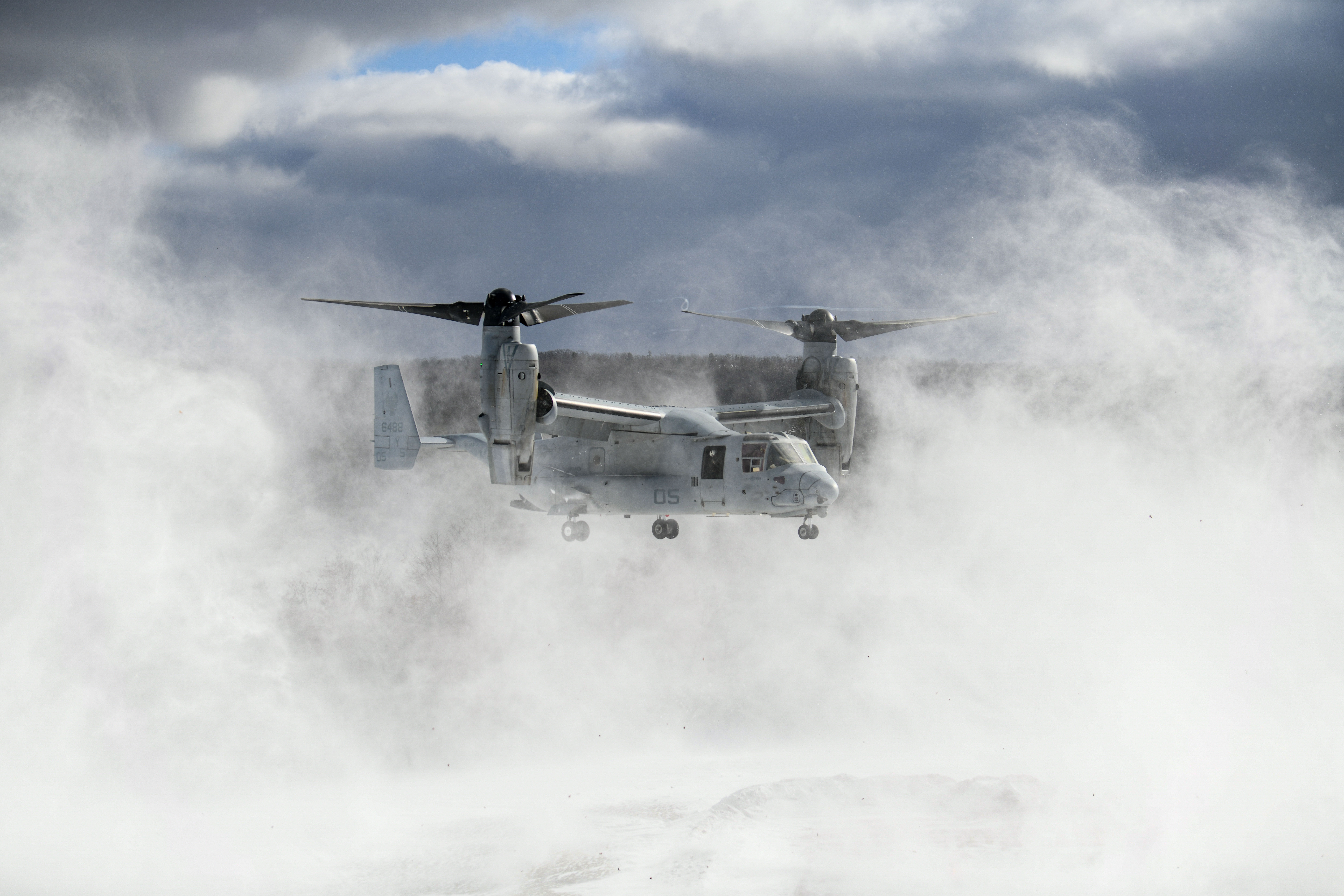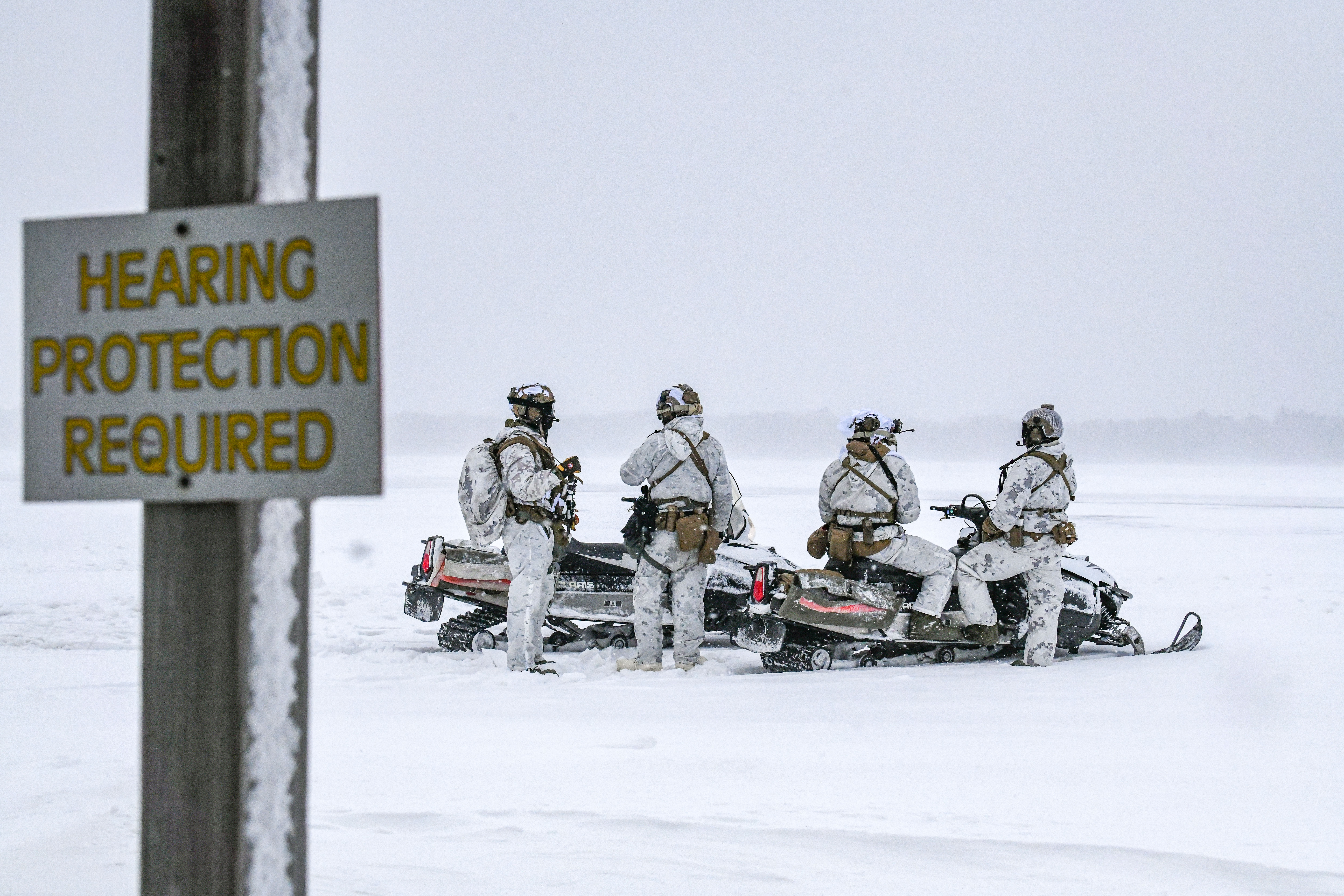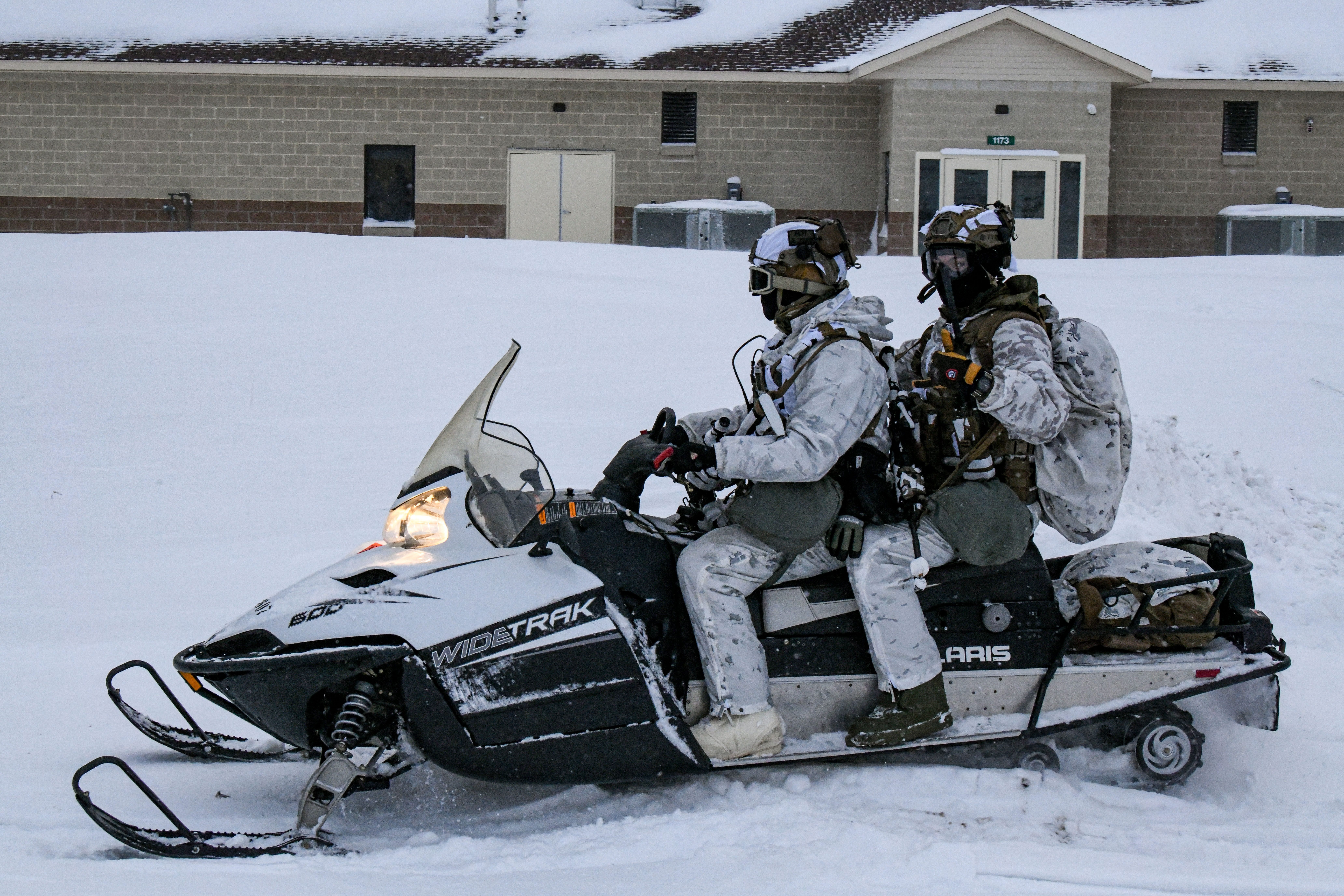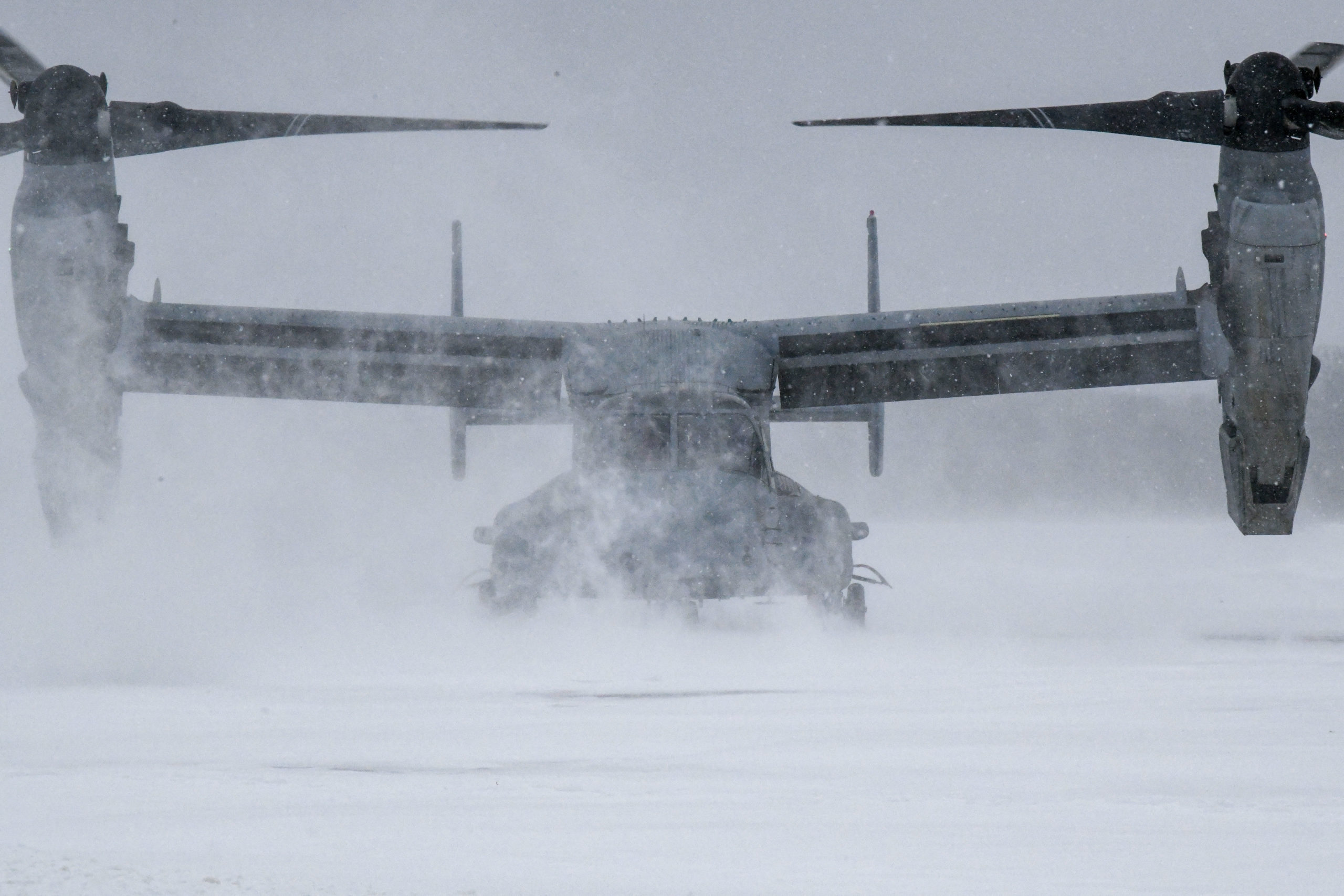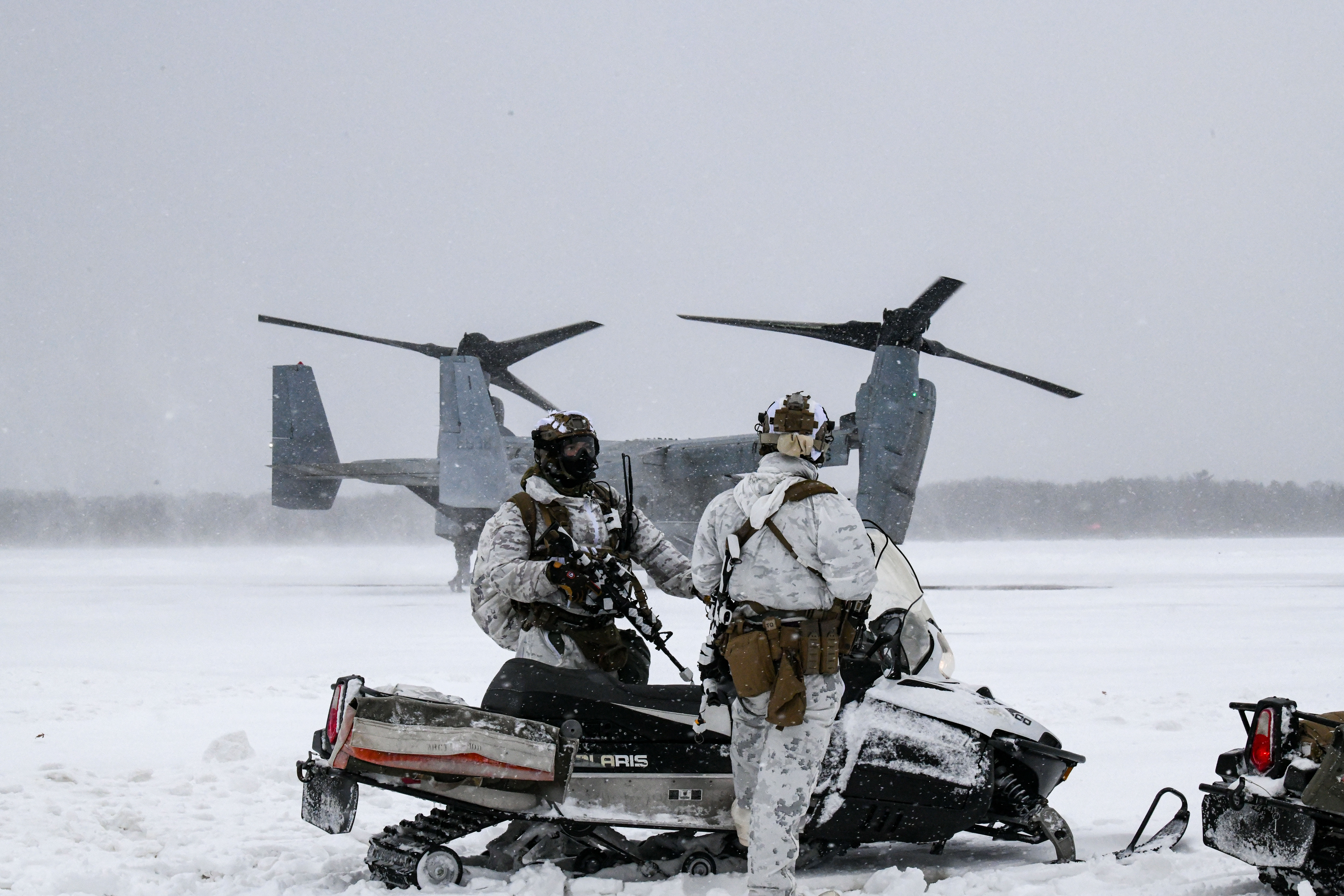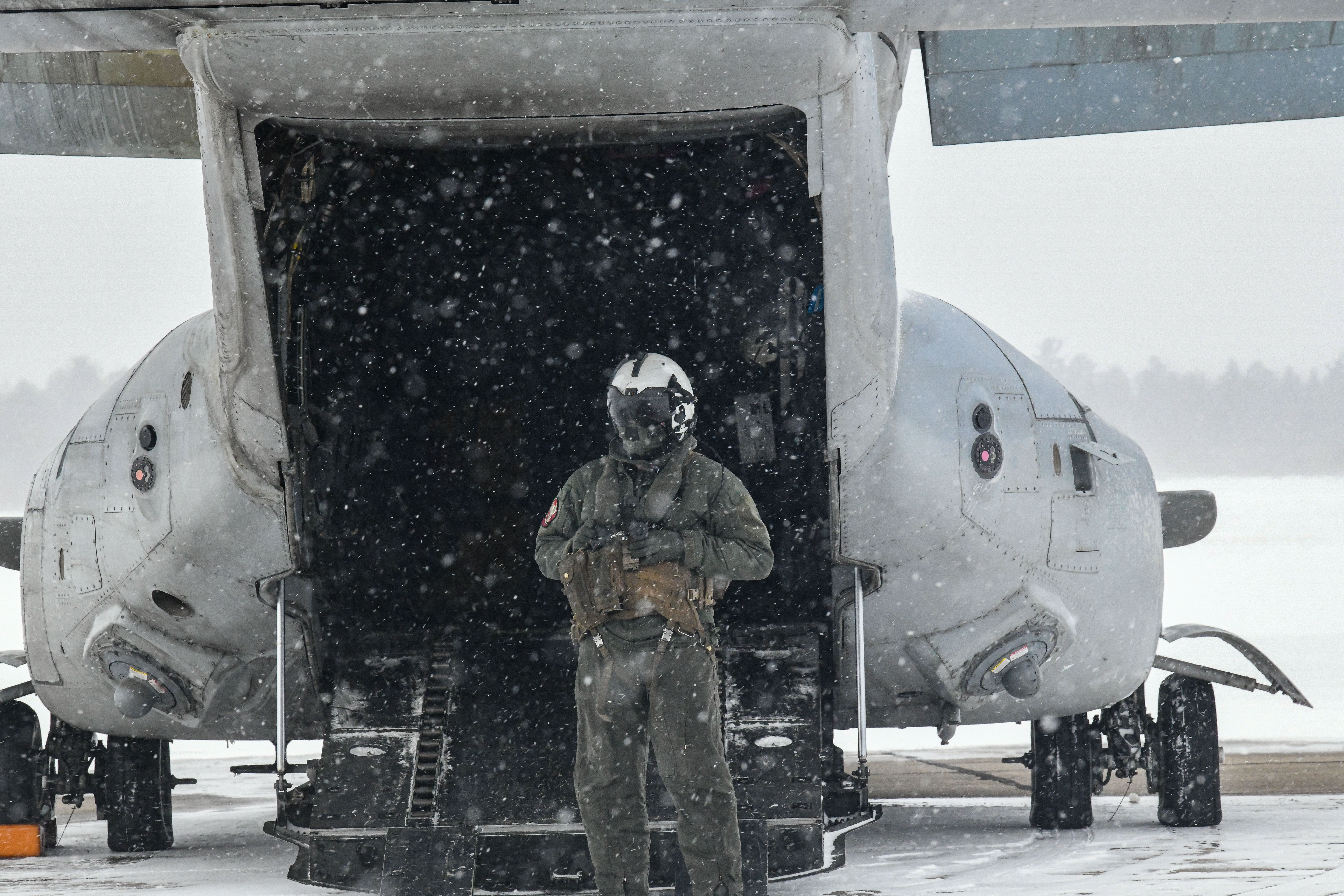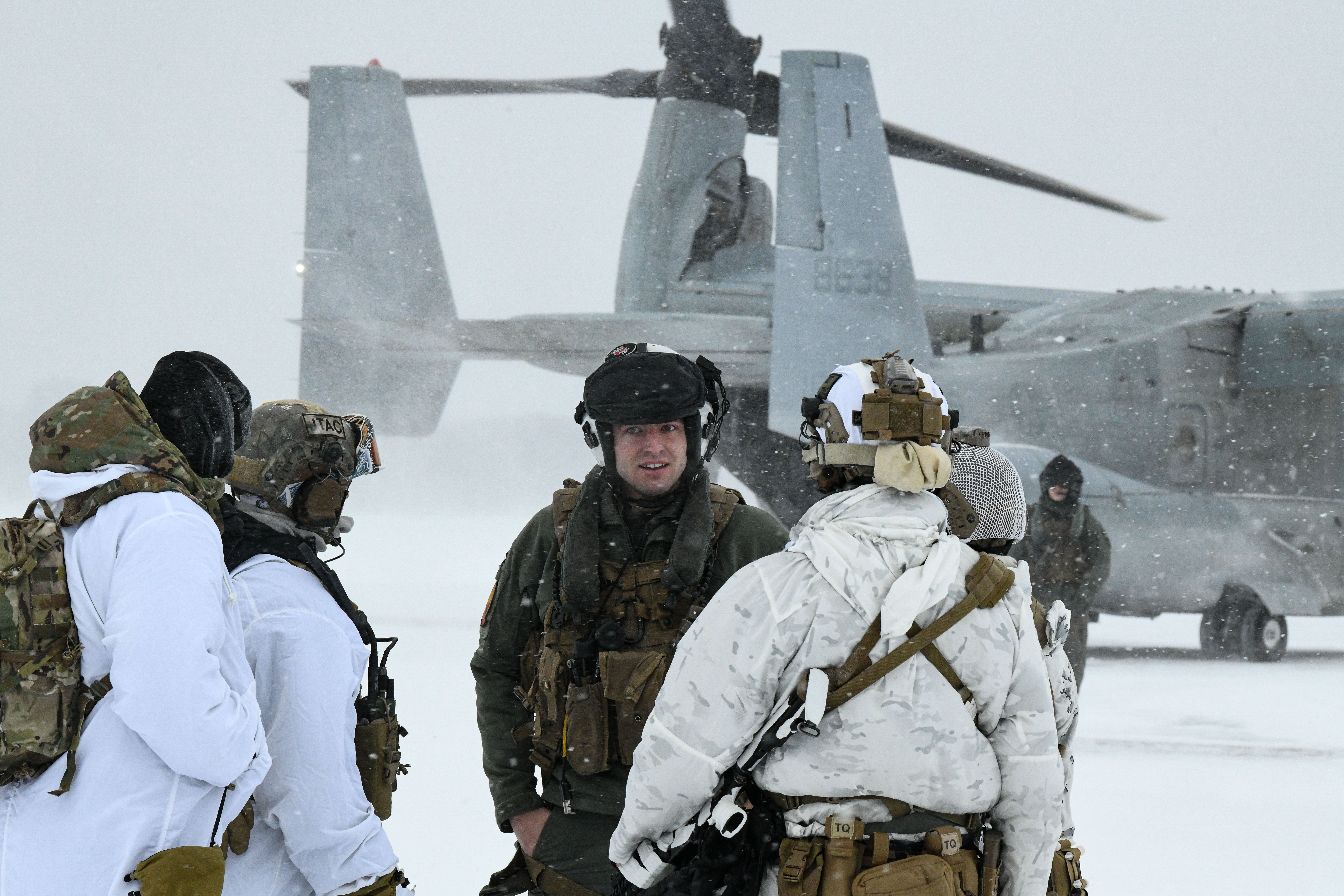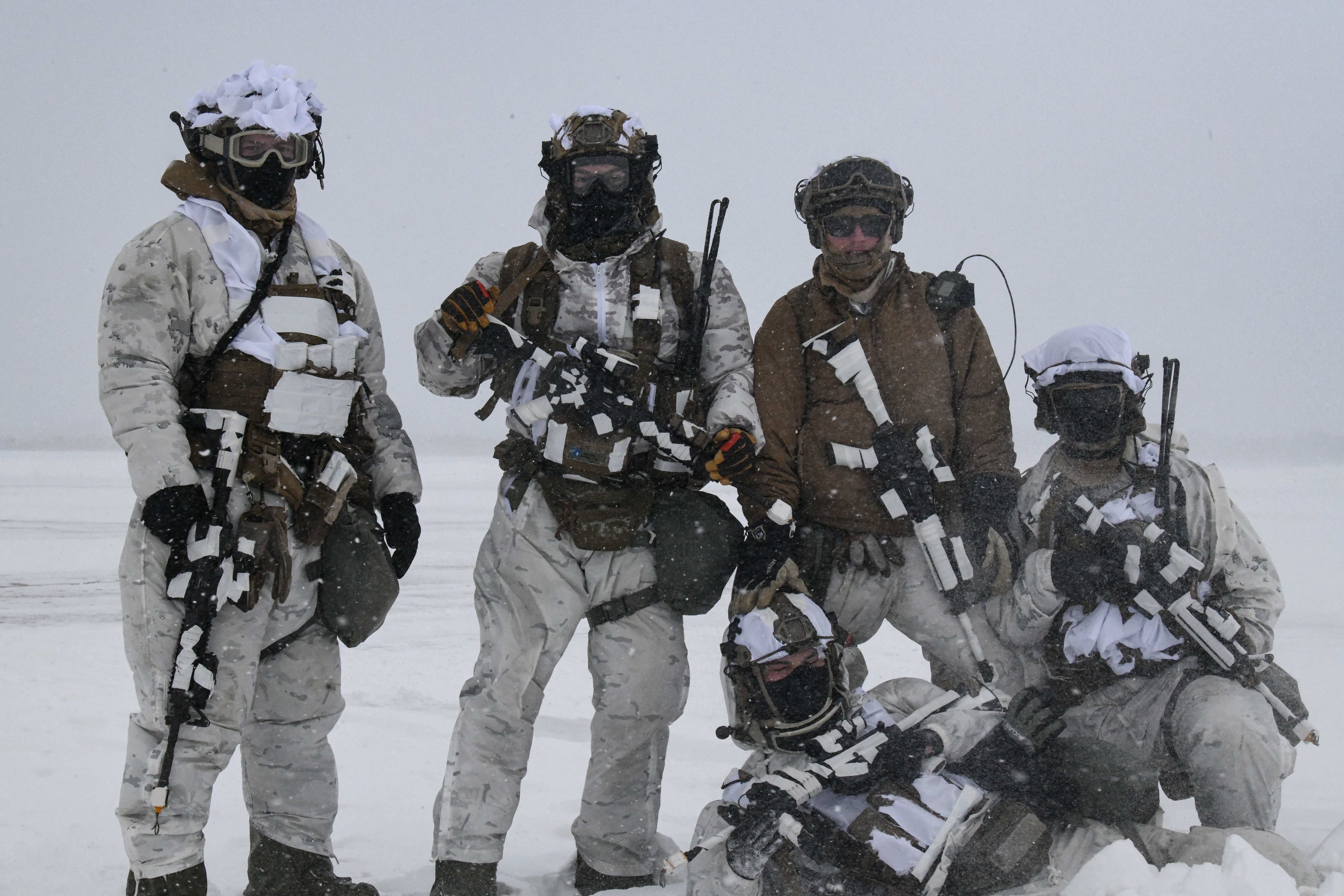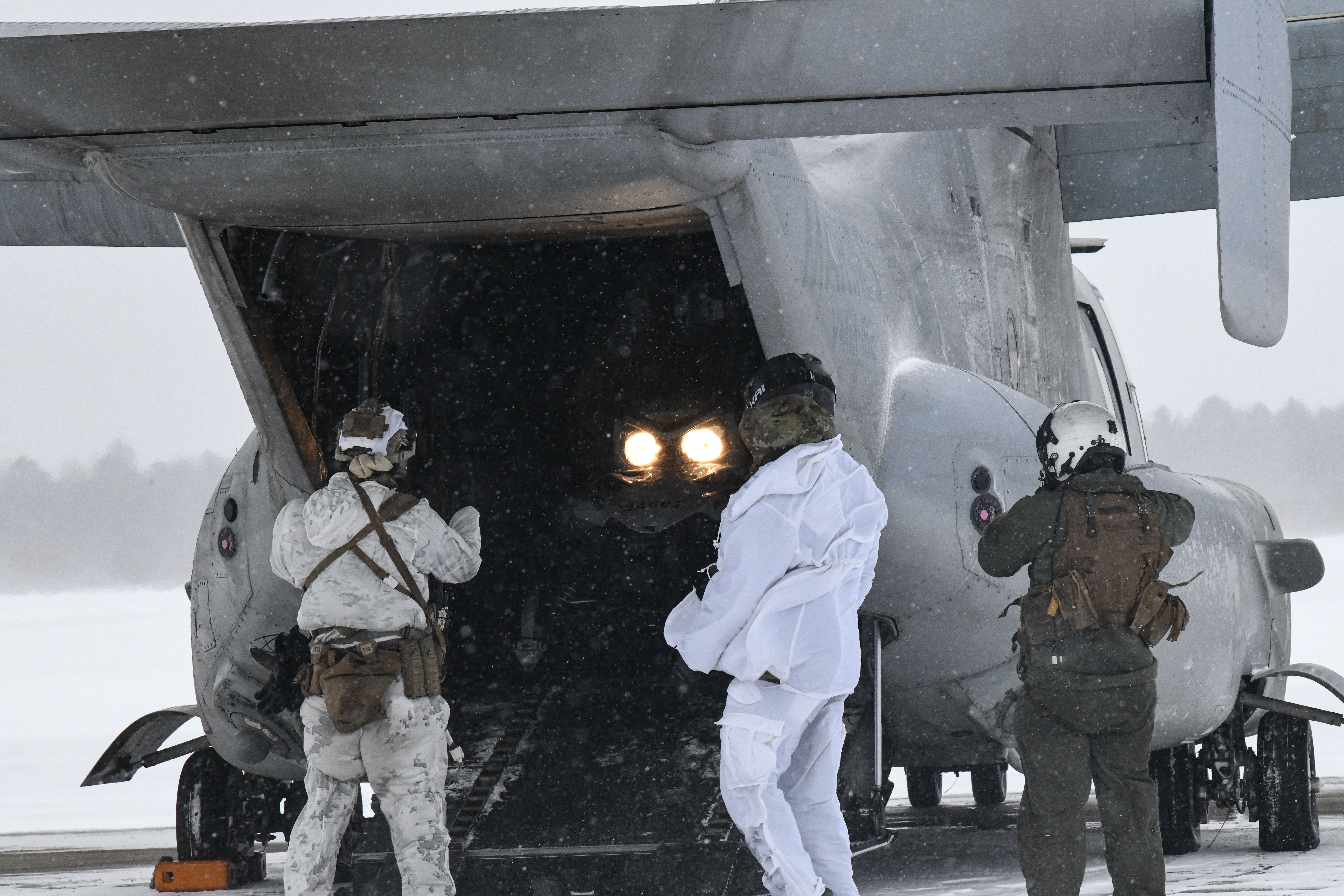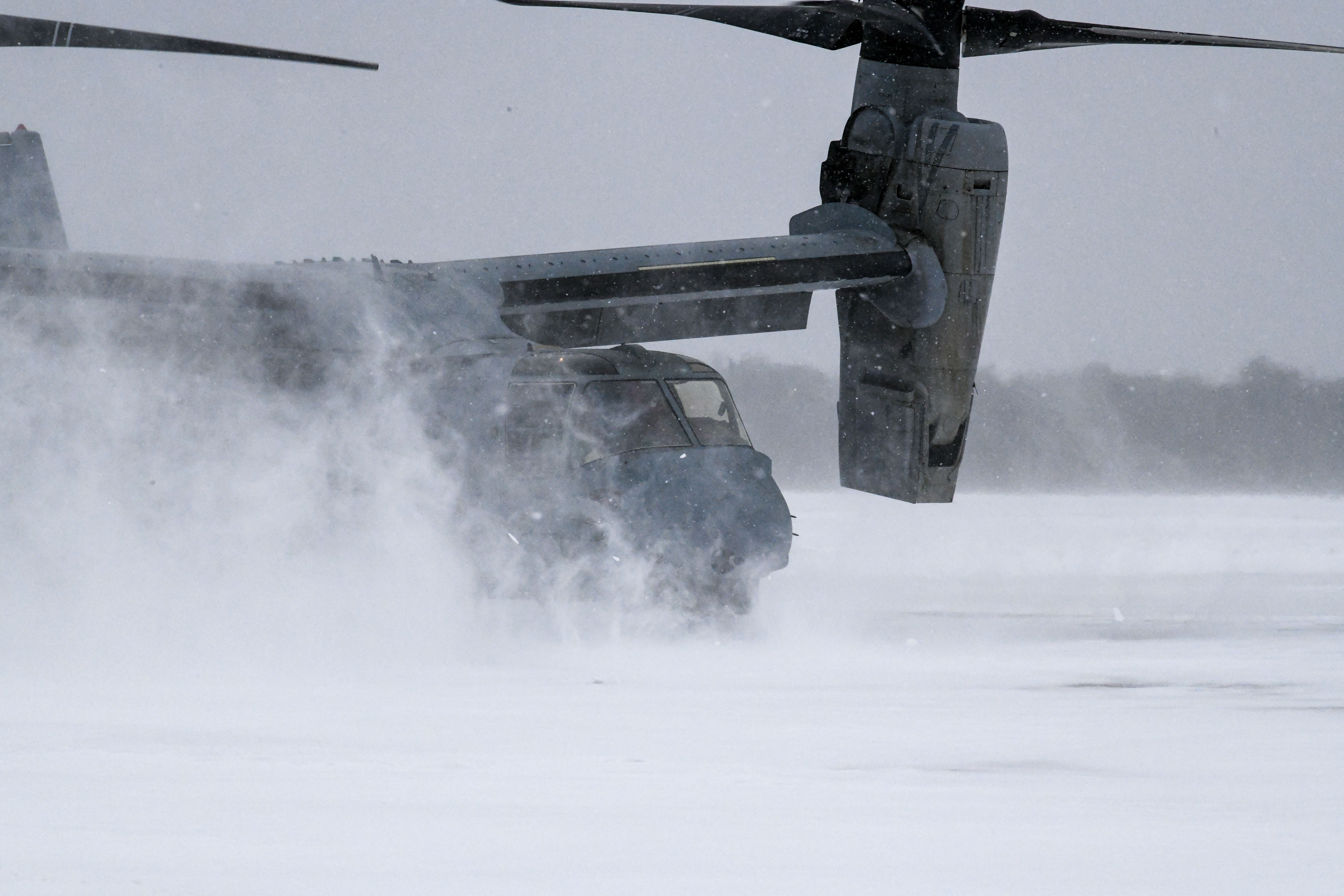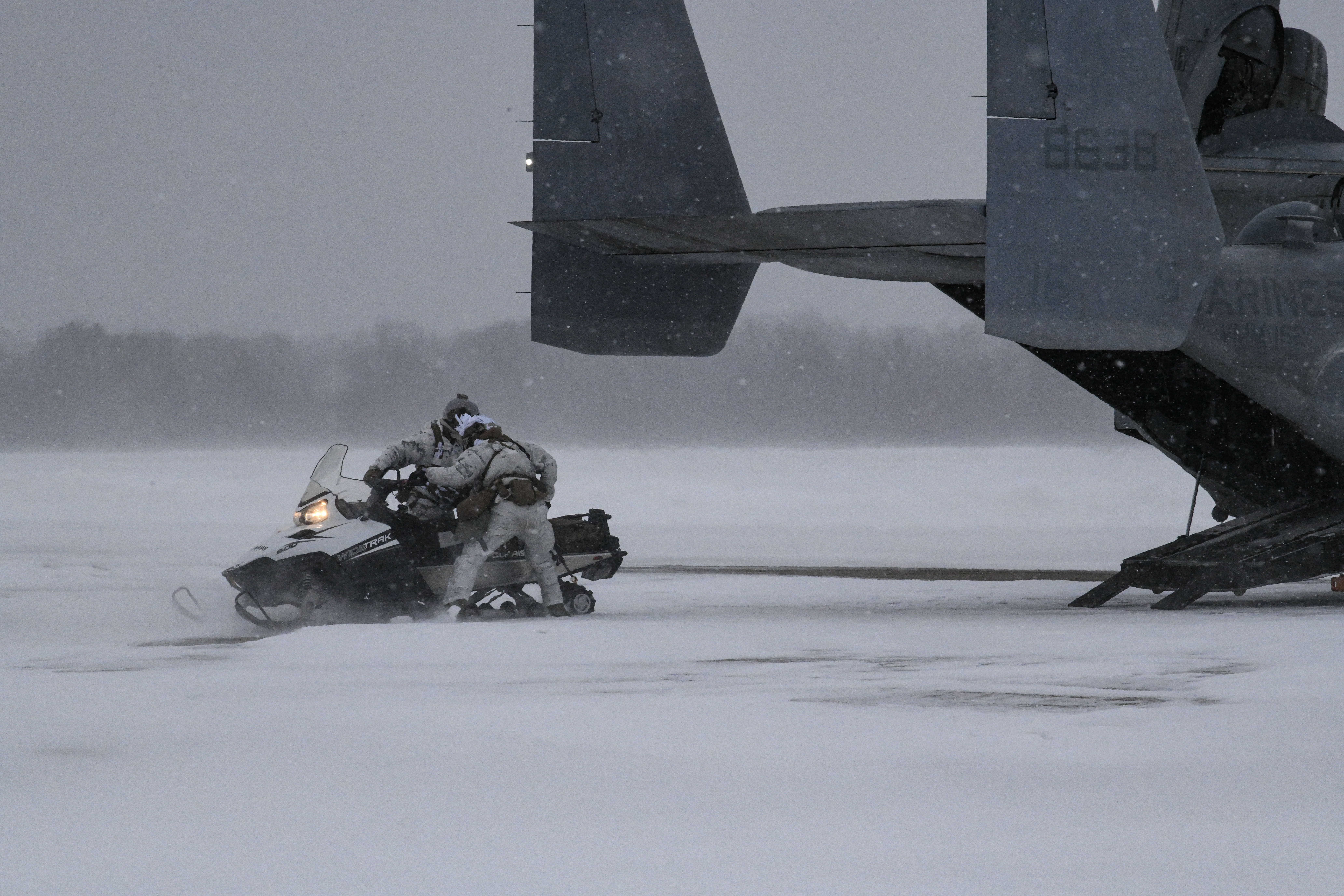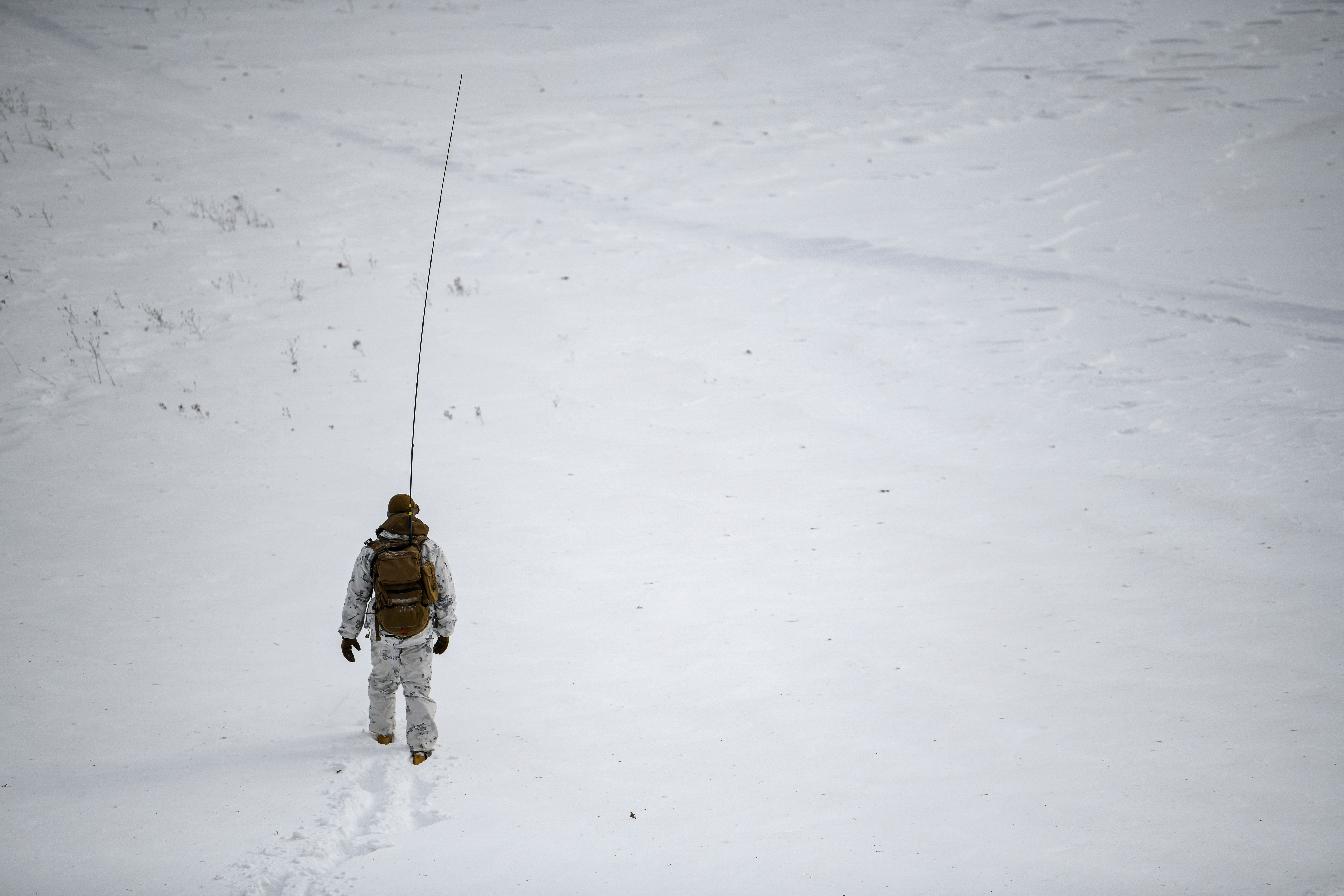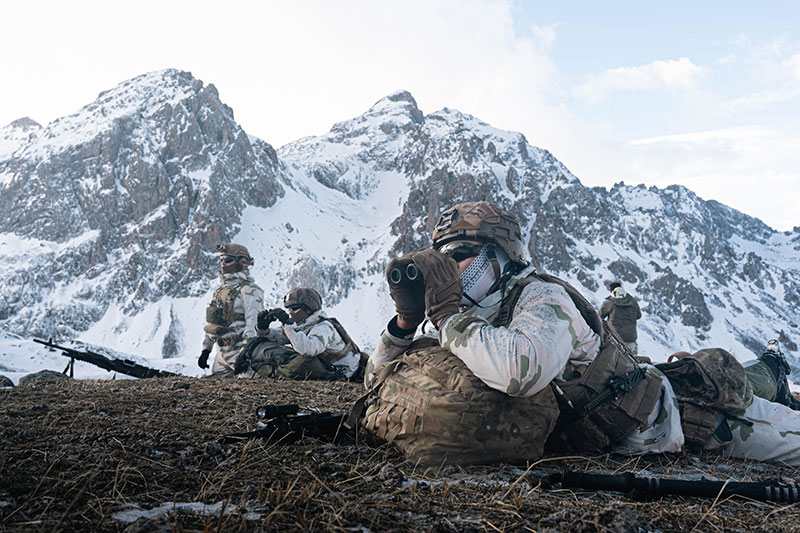By Murielle Delaporte
Conceived of as “a forum for an exchange between industries and specialized military units operating in a variety of environments ”, General Catar is delighted to “welcome this community to Grenoble, capital of the Alps and of the French Army Mountain Infantry Brigade, the 27th BIM”, and is confident in the success of the first edition of the International Mountain Troop Summit (SITM), which registered participation and volume of exhibitors and equipment manufacturers’ attendance are already in line with expectations.
The aim of this “world premiere” is “to get people to think about issues common to environments traditionally operating in silos, since mountains can be both cold and hot, and are considered by different nations as a frontier zone, a refuge zone or a strategic space for competition among powers ”.
For the commander of the 27th Mountain Infantry Brigade, the idea is to “create a First of Rope spirit that will enable allies to have each other’s back ”, while a strong international dynamic as well as numerous historic partnerships are already in place.
Over the course of the two-day event, military personnel – joint, combined and allied – and equipment manufacturers will be able to “discuss innovation and multiply lessons learned” keeping in mind “ the fundamentals of warfighting, i.e. moving, stationing and using weapons ”.
“With these three core functions,” explains General Catar, ”you cover all the consequences inflicted by these mountain and extreme-cold environments, (…) the most engaging environments that do require such exchange within our communities”.
A First Born From A Long History Of International Cooperation
The SITM responds to “the intuition and purpose of bringing together a community of military units operating in a variety of environments” and corresponding to very specific operational challenges: on the one hand, the mountains, where maneuvering in hot and cold environments requires constant adaptation of tactics and equipment; on the other, the extreme cold, reflecting current strategic challenges and threats in the Arctic zone as well as in NATO’s High North.
These concerns are reflected in the partnerships forged over the years by the 27th BIM, both bilaterally and multilaterally, thanks to its versatility and expertise in all these areas – a specificity shared only with Italy’s Taurinense Alpine Brigade. Both “mutually created by cross-threat in 1888 ” and now the largest were deployed on several occasions to Afghanistan as part of NATO’s war on terrorism in the wake of the 9/11 attacks in the United States of America.
Defense Agreements and a French-style “Integrated Offer”
“The 27th Mountain Infantry Brigade is the Army brigade with the most active internationally, with a wide range of partners who come to us for our expertise, while our interest lies in maneuvering in other environments”, explains General Catar, underlining the brigade’s highly integrated structure and therefore the integrated offer it can propose to its foreign partners.
“Within the 27th BIM, we have a highly integrated structure, with a specialized school for training non-commissioned officers, specific gear, and an operational readiness training area spread across the entire Alpine arc, with firing ranges and military posts in the mountains.”
Such a full spectrum focus interests the partners of the 27th BIM, with whom France has signed defense agreements, such as the United Arab Emirates, with whom it has built a “new mountain capability” focused on border defense and the protection of mountain transit routes: ”we have been training the 11th Emirati Mountain Battalion for ten years, and we train together through exercises that progress from year to year. (…) As for us, with 35 degrees Celsius and high humidity, we are looking for a harder training environment than in other hot mountains.”
Bilateral cooperation plans of this kind also exist with Jordan and Morocco, with whom joint maneuvers are carried out, as well as exchanges on technical and tactical training and lessons learned.
Strategic Solidarity in the High North and Multilateral Exercises
Recent events have not only strengthened traditional partnerships between “local” mountain troops, but also led to the creation of new cooperative ventures within NATO and the European Union.
Since the early 2000’s, the 27th BIM has been involved in all NATO exercises, such as Nordic Response and Dynamic Front, as part of a “strategic solidarity approach in the High North” in order to ensure the rapid deployment of specialized units in this region under Article V of the North Atlantic Treaty, as well as a deterrence approach to express “France’s military and diplomatic weight ”.
The French presence is thus recurrent in the Baltic States (currently Estonia), in Norway and, since its recent accession to NATO, in Finland. During Nordic Response 2024, the 7th BCA (“Bataillon de chasseurs alpins”) was integrated into a Norwegian battle group and brigade, with Finnish support for the very first time[1]:
“Thanks to the total defense concept characteristic of Scandinavian countries and Finland, the projected resources of French troops – snowmobiles and quads in particular – were supplemented by Finnish tracked vehicles for three weeks”, recalls the French brigade commander.
“We are also working with the Americans in Alaska, who recently re-established a complete Extreme Cold unit, as part of Exercise Nanook, which enables us to train in a “Very Extreme Cold” environment. (…) To be able to exert such a high level of stress on our bodies and gear in France, we need to be very high up in the mountains. The advantage of countries like Canada, Norway and Finland is that they offer more extensive cold periods in which to operate ,” explains General Catar.
The annual “Uppick” missions, which take place in Greenland in the form of three-week raids in complete autonomy, are part of this quest for training in areas of extreme cold. The ‘’Groupe militaire de haute montagne’’ and the ‘’Groupement commando de montagne’’ are traditionnally involved in these expeditions.
Sharing lessons learned has become automatic within the French Army, but also with Allies, notably through NATO’s Centers Of Excellence. Two of these are particularly relevant to the activities of the 27th BIM: the Mountain Warfare Centre of Excellence (MW COE) in Slovenia, and the Cold Weather Operations (CWO COE) in Norway.
Last fall, France also hosted the 2024 edition of the MTI forum – a European initiative dedicated to mountain combat and known as the “Mountain Training Initiative”, which includes a number of European partners, including non-NATO members such as Switzerland, which participates as an observer.
A New Forum For Military Readiness In Demanding Environments
An All-Terrain Approach
Few items of equipment are designed to withstand both hot and cold environments: on the contrary, know-how tends to be very different, due to the specific needs each mission requires: “In hot mountains, combat uniform will have to be breathable and light, whereas in cold mountains, it will have to be breathable and insulating. In cold environments, we need to play with combinations of equipment and technical layers of gear ”, explains General Catar.
Men do remain at the heart of any action, and they “do not really like extremes, whether hot or cold”, hence the importance of a know-how specific to each environment, a specificity shared by the French and Italian Brigades, both of which – it is useful to recall – have served in Afghanistan.
“The 27th BIM has been deployed in Afghanistan for winter mandates four years running; it has also served in the Sahel and is regularly deployed for the “Harpie Mission” [against illegal gold-panning] in French Guiana. (…) It is precisely this skillset necessary to handle both extremes of the thermometer that we thought interesting to bring to bear during this International Mountain Troops Summit. (…) It’s also a state of mind, in the sense that any demanding environment prepares you for commitments in any demanding environment, whatever it might be. The technical mastery of cold-weather equipment prepares you for operational readiness for any mission …”
The versatility of the 27th BIM is another specificity while “not everyone has an access pass to operate in extreme cold”, hence the need to disseminate certain know-how that has today become necessary for most conventional forces, especially as they have to train in places where temperatures are not necessarily very mild, even in France (Jura, for example).
This is already the case for mountain troops, who run “Cold Zone” training courses for all branches of the armed forces, enabling them to familiarize themselves with the first steps of life in sub-zero temperatures.
The 27th BIM also took part in having the rest of the armed forces adopt specific Cold Weather gear, as they have been called upon to reinforce NATO’s Eastern flank from 2022 onwards. The Brigade also drafted targeted documents on vehicle maintenance in cold environments for wider distribution.
Not only is certain equipment specific, but its maintenance is indeed also very specific: humidity is the number one enemy in cold zones, as it transforms into ice and cracks screens. Avoiding condensation and thermal shock are two of the principles you need to learn, both for yourself and for your equipment.
How can one avoid thermal shock to one’s equipment, when people need on the opposite to regenerate in the heat?
“You have your equipment sleep in the cold pit of your igloo at -5 or -6 degrees celsius, while you sleep on a small bench with a zero to 1 degree comfort…”, answers the general. Ditto: operating in total autonomy, including in terms of connectivity, requires specific know-how within the transmitter units.
Despite deployments to hot zones over the last few decades, the 27th BIM has been able to preserve its “moderate zone” skills thanks to its dedicated military school (the EMHM for “Ecole militaire de haute montagne” and the GAM for “Groupement d’aguerrissement montagne”, as well as its “extreme cold” skills thanks to regular interactions with Scandinavian allies. One sector in which this know-how is particularly essential, albeit in need of constant improvement, concerns combat medical support and rescue teams:
“Performing an IV by -20 degrees Celsius is not a mass sport ”, General Catar points out. The French military health service (SSA for “service de santé des Armées”, which will be exhibiting at SITM) develops products specifically for this demanding environment.
An intrinsic joint and combined approach
The 27th BIM is characterized by a constant joint approach. It operates as tactical combined armed group (or task force) – GTIA in French for “Groupement Tactique Interarmes” – integrating numerous units, including, as fas as support is concerned, “the 511th Train Regiment, the 7th Material Regiment from Lyon, the 7th Armed Forces Medical Center, the Grenoble Army Commissariat and so on”.
The 4th BAC (Brigade Aéroterrestre) of the French Army Aviation – ALAT for “aviation légère de l’armée de Terre – is one of the units taking part in the “Mountain” training courses offered by the 27th BIM, which teach, among other things, logistics flows and energy management.
Military exchanges on extreme cold are also conducted on a joint basis, through seminars and in the field. Recent events in Ukraine and renewed interest in the key Northern sea lanes of communication, which are undergoing major changes as a result of climate change, have also been the catalyst for a new type of cooperation between the 27th BIM and the French Navy: expertise in the extreme cold of the marine environment, as well as the “ deployment of units for surveillance in the North Atlantic and the Arctic zone” are among the exchanges currently being developed between the French Army and Navy, while interoperability with the French Air Force and Space Force is ongoing, due to air transport and air delivery requirements.
Such an approach is logical in that “extreme cold affects all military capabilities”, hence the guideline adopted during the International Mountain Troops Summit covering “the basic axes of the combatant, i.e. moving, stationing and using weapons”. Mobility, support for the fighter, protection against the cold, regeneration and “ hot spots ”, visual and thermal camouflage (“ a body at 37 by -15 degrees celsius is noticeable… ”, General Catar points out), energy management, fluid management – “ which is very disturbed in such environments ” -, optics, connectivity (which requires a lot of energy), simulation for training and for assessing the impact of combat in cold environments on men and equipment…
These are just some of the areas where innovative solutions are welcome and needed to improve combat capabilities and ensure long-term survival in mountain and extreme-cold environments.
The length of stays in such harsh conditions does depend on the mission and can last from 3 to 4 days for commando operations to 3-week raids in total autonomy, “the diktat of weight, particularly for food, and energy autonomy” being one of the key constraints to manage.
The equipment manufacturers expected at SITM, as well as certain exhibitors such as the French Atomic Energy Commission (“Commissariat à l’énergie atomique”), with which the 27th BIM has a partnership, will cover all these fields of expertise.
But one thing which is interesting to stress out is the fact that there is not just one shade of cold or snow, and that equipment must be adapted to suit any type of geographical environment: “ an adaptation in terms of mobility is necessary for each deployment. (…) Tracked vehicles in the High North are designed for light, powdery snow, which has nothing in common with our much wetter snow in the Alps … ”.
For General Catar, the SITM offers a means of responding to all these issues and find solutions to compensate some of our capability gaps. He identifies two key ones for mountain troops:
“The first is combat intelligence in a maneuver environment. The second is support and integrated, forward-looking logistics: the ability to be well supported – supply, maintenance, medical support – is what gives the armed forces operational superiority by providing the ability to withstand extreme environments and deliver military effects over time. (…)
You can’t just ‘beat a dead caribou’, you have to plan ahead for this type of operation, which requires a great deal of planning ”, the Mountain Troops Commander concludes.
This article was first published on the International Mountain Troops Summit.
The summit recently concluded in Grenoble with the next summit to be held in 2027.
The International Mountain Troops Summit (SITM) is the meeting place for armies from all over the world who operate in extreme conditions, in mountainous environments and in freezing temperatures. It will be next held in Grenoble on 10 and 11 February 2027.


